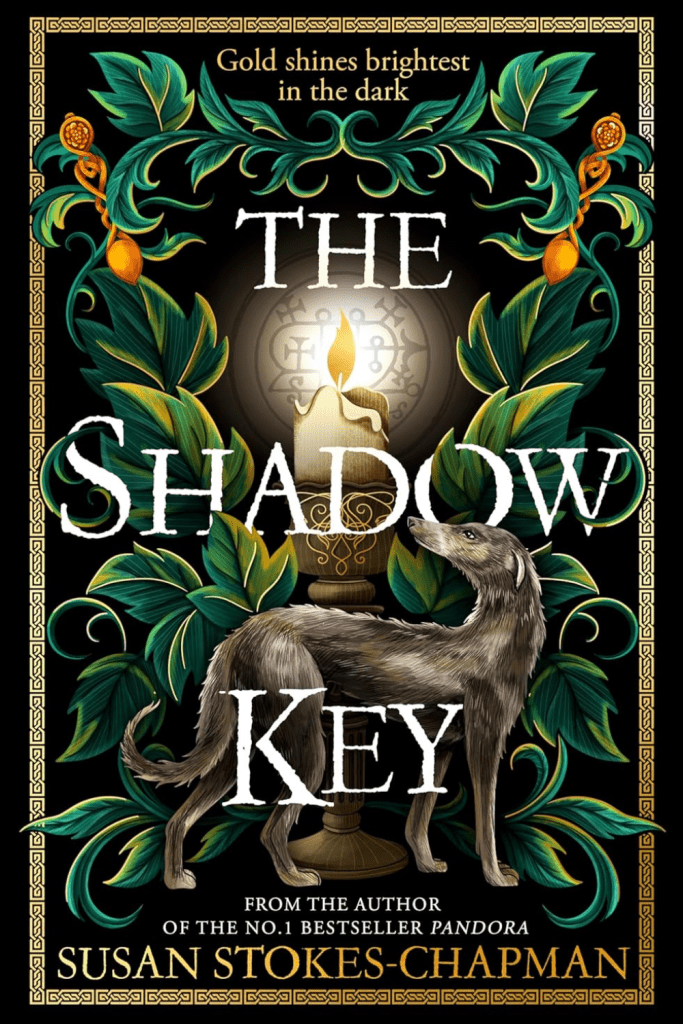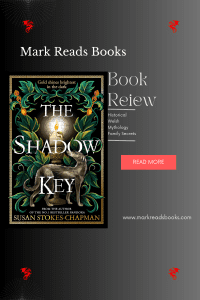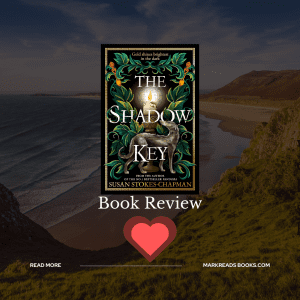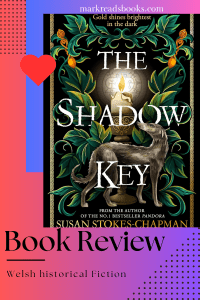The Shadow Key by Susan Stokes-Chapman is a captivating read for those who appreciate gothic fiction, historical settings, and folklore-inspired narratives

| Title | The Shadow Key |
| Writer | Susan Stokes-Chapman |
| Publisher | Harvill Secker |
| Publication date | 18th April 2024 |
| MBR star rating /5 | ⭐⭐⭐⭐ |
| Genre | Gothic Historical Fiction Mystery |
fact sheet
Tags

Pinterest pin
Synopsis:
In 1783, Henry Talbot, a former physician from a prestigious London hospital, finds himself in the remote village of Penhelyg, deep in the Welsh countryside, after being dismissed from his post. Isolated and unable to speak the language, Henry is met with a community steeped in superstition and wary of outsiders. The villagers’ strange behavior intensifies when he learns that the previous physician met an untimely and mysterious end. Determined to uncover the truth, Henry embarks on a journey to understand both the village and its secrets.
Living nearby is Linette Tresilian, the unconventional and independent mistress of Plas Helyg. Her life is marked by loneliness—her father long dead, her mother locked away in a world of madness, and her cousin treating her with cold indifference. Over the years, Linette has sensed that something is amiss in Penhelyg, though the full extent of the village’s hidden history has remained just out of reach.
As Henry’s investigation deepens, he and Linette are drawn into a web of secrets that stretches back further than either imagined. Together, they must confront the mysteries that linger over the village and the shadows that haunt those closest to them. The truth, once revealed, will not only change their lives but bind their fates in ways neither could have foreseen.
“There’s something mysterious about the village of Penhelyg. Will unlocking its truth bring light or darkness?”
Review of
The Shadow Key by Susan Stokes-Chapman is a beautifully atmospheric historical fiction novel set in 1783 Wales, blending gothic elements with the region’s rich mythology. The novel’s dark, misty backdrop in the remote village of Meirionydd lends a haunting ambiance to the story, immersing readers in a world where folklore, superstition, and emerging Enlightenment ideals clash.
Characters and Themes
At the heart of the novel are its two central characters, Henry Talbot and Linette Tresilian, whose contrasting perspectives drive the narrative. Henry is a young doctor who, after being dismissed from his position in London, finds himself taking a job as a private physician in rural Wales. Not only is he tasked with caring for Linette’s ailing mother, but he also has to navigate the suspicion and mistrust of the locals, who resent his Englishness and his reliance on modern medicine rather than traditional folk remedies. His struggle to adapt to the village’s ways while maintaining his own scientific principles is one of the book’s central tensions.

Instagram Post
Linette, on the other hand, is a fiercely independent young woman living under the weight of her family’s history and local expectations. She defies gender roles by donning her father’s old clothes and acting as a caretaker for the villagers in her own way. Her deep connection to the local culture, including its myths and folklore, contrasts with Henry’s rationalism, and this dynamic adds richness to their evolving relationship. The novel explores how both characters attempt to reconcile their pasts with the present challenges they face, all while unraveling the dark secrets lurking in Linette’s family and the village itself.
Gothic Atmosphere and Setting
The novel’s gothic undertones are skillfully woven into its narrative, with the decaying manor house, the misty, forbidding landscape, and the ever-present specter of Welsh mythology enhancing the sense of isolation and mystery. Stokes-Chapman excels at creating a sense of place, using the rugged, untamed Welsh landscape not only as a setting but as a character in its own right. The isolation of Meirionydd mirrors the psychological isolation of the characters, particularly Henry, whose alienation as an outsider underscores his internal struggle.
The interplay between Enlightenment ideals—represented by Henry’s scientific approach—and the ancient folklore that permeates the village adds depth to the novel. Wales, in the late 18th century, is on the cusp of change, and this tension between progress and tradition is reflected in the characters’ experiences. The novel touches on themes of faith versus reason, the power of belief, and the ways in which cultural identity is preserved or lost over time.
Mythology and Mystery
One of the novel’s most compelling elements is its integration of Welsh mythology into the plot. While the myths may not be familiar to all readers, Stokes-Chapman handles them in a way that enhances the story rather than overwhelming it with unnecessary exposition. The folklore adds a mystical, otherworldly layer to the narrative, grounding the plot in a sense of the uncanny that fits perfectly with the gothic tone of the novel. The way these myths subtly influence the unfolding mystery is cleverly done, making the reader question what is real and what may be supernatural.
That said, the mystery element, while central to the novel, can feel a bit predictable at times. The novel sets up an intriguing premise with hints of secrets hidden within Linette’s family and the village’s dignitaries, but the revelations that follow may seem obvious to some readers. The foreshadowing is fairly clear, and while this might detract from the mystery’s overall impact, the strength of the novel lies more in its character development and atmosphere than in its twists and turns.
Who Should Read This Book?
The Shadow Key will appeal to readers who enjoy historical fiction with a strong sense of place and atmosphere, especially those drawn to gothic literature. Fans of novels like Daphne du Maurier’s Rebecca or Laura Purcell’s The Silent Companions will appreciate the dark, brooding tone and the way the setting becomes almost a character in its own right. The novel’s focus on Welsh culture and mythology adds a unique element that will attract readers interested in folklore, particularly those curious about lesser-known myths from Britain’s Celtic regions.
This is a novel for readers who enjoy a slower-paced, atmospheric narrative, where the tension builds gradually rather than relying on constant action or dramatic reveals. If you’re looking for a story that blends historical detail with elements of the supernatural and explores the clash between reason and belief, The Shadow Key will not disappoint.
Conclusion
The Shadow Key is an immersive and atmospheric novel that skillfully combines historical fiction with gothic elements and Welsh mythology. Susan Stokes-Chapman’s rich descriptions of 18th-century Wales bring the setting to life, while her nuanced character development adds emotional depth to the story. Although the mystery itself may not deliver many surprises, the novel’s strength lies in its evocative setting and the interplay between its two protagonists, Henry and Linette, as they navigate the challenges of both the physical and supernatural world around them.
Overall, The Shadow Key is a captivating read for those who appreciate gothic fiction, historical settings, and folklore-inspired narratives. While it may not have the most unpredictable plot, the journey it takes readers on is an enjoyable one, making it a rewarding experience for those willing to lose themselves in its eerie, windswept world.
Conclusion

Pinterest pin
If you would like to see some more go here Insightful Book Reviews or here to add Shadow key by Susan Stokes Chapmen to your GoodReads TBR
Like follow or share if you would want similar content.
Above all Keep Safe and treat people fairly.
Mark.